Investigating U.S. History


“Notice what you notice.”
-- Allen Ginsberg
“Who we are, to some variable extent, determines what we notice and, at another level of intellectual activity, what we regard as worthy of notice, what we find significant.”
-- Robert Coles
Select a document from The Written Record that you find particularly interesting and that adds to your understanding of the strike. Post on the discussion board five paragraphs analyzing the information in the document.
Questions you may wish to consider:
Come up with your own questions, and be sure to give reasons for any inferences you make. Respond to the analyses of at least two of your classmates, focusing on those statements with which you particularly agree or disagree.

Government Poster
“SEC. 7. (a) ...That employees shall have the right to organize and bargain collectively through representatives of their own choosing, and shall be free from the interference restraint, or coercion of employers of labor, or their agents...”
“Police used their clubs freely and mounted officers rode into milling crowds. The strikers fought back, using fists, boards and bricks as weapons. Rioting was widespread...”

Tillie Lerner Olsen
“Do not ask me to write of the strike and the terror. I am on a battlefield, and the increasing stench and smoke sting the eyes so it is impossible to turn them back into the past...”
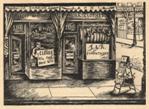
Bits Hayden, “Closed till the
Boys Win,” ca.1949
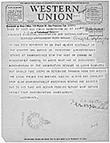
"It has been reported to us that aliens illegally in the country are active in fomenting longshoremans strike at San Francisco stop..."

“What really happened in San Francisco's general strike? What were the issues? What do they mean to labor, employers, the community? What of the vigilantes and their violent anti-Red campaign? Two Californians here give the story down to date ...”

The Waterfront Worker
1932-1936
“Quoted below are the final decisions of the Communist leaders of the Pacific Coast relative to the maritime strike situation. The decision was arrived at after two days secret meetings between the following men...”
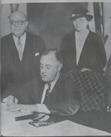
Sen. Robert Wagner and
Sec. of Labor Frances
Perkins watch President
Roosevelt sign the
National Labor Relations
Act
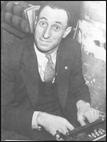
Harry Bridges
“He is a slight, lanky fellow in his early forties, with a narrow, longish head, receding dark hair, a good straight brow, an aggressive hook nose, and a tense-lipped mouth. He wears cheap clothes and is indifferent about his appearance. His salary as head of the union is less than the average wage of the union members...”
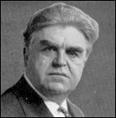
John L. Lewis
“No tin-hat brigade of goose-stepping vigilantes or bibble-babbling mob of blackguarding and corporation paid scoundrels will prevent the onward march of labor, or divert its purpose to play its natural and rational part in the development of the economic, political and social life of our nation...”
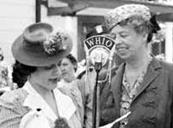
Audrey Wilcke Evans
interviewing Eleanor Roosevelt
for WHIO Radio in Dayton, Ohio,
ca. 1941.
“I have always been interested in organizations for labor. I have always felt that it was important that everyone who was a worker join a labor organization, because the ideals of the organized labor movement are high ideals...”
“The employers painted the strikers in the garb of radicalism. They publicized their own position throughout the negotiations as one of fairness, reasonableness, and conciliation, while the longshoremen were asserted to be arbitrary, unreasonable, and irresponsible...”